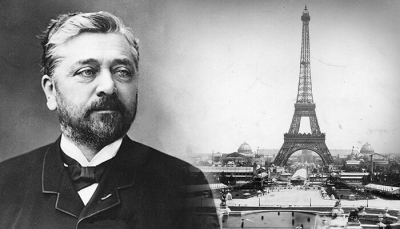
Alexandre Gustave Eiffel was a French civil engineer. A graduate of École Centrale des Arts et Manufactures, he made his name with various bridges for the French railway network, most famously the Garabit viaduct. He is best known for the world-famous Eiffel Tower, designed by his company and built for the 1889 Universal Exposition in Paris, and his contribution to building the Statue of Liberty in New York. After his retirement from engineering, Eiffel focused on research into meteorology and aerodynamics, making significant contributions in both fields.
The basic design of the Eiffel Tower was introduced to Eiffel by Eiffel et Compagnie engineers Maurice Koechlin and Émile Nouguier. They imagined “a great pylon, consisting of four lattice girders standing apart at the base and coming together at the top, joined together by metal trusses at regular intervals.”
Eiffel agreed to build upon their vision. He, along with a team of top engineers and architects—including Koechlin, Nouguier, and Stephen Sauvestre, who designed the tower’s signature arches—envisioned a three-leveled, 1,063-foot tower made of wrought iron.
In addition to showcasing his engineering skills, Eiffel intended to commemorate the French Revolution with his tower, as the World’s Fair would fall 100 years after its onset. Thus, to Eiffel, the edifice was much more than an entrance; it was “an expression of France’s gratitude.”
Credit : My Modern Met
Picture Credit : Google




